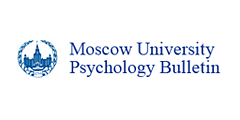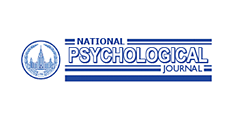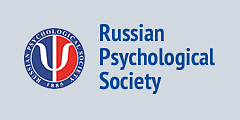
Research Center of Neurology, Moscow, Russia
Federal Scientific Center for Psychological and Interdisciplinary Research, Moscow, Russia
Lomonosov Moscow State University,
Neurology Research Center,
Moscow, Russia
-
The Use of Specialized Neuropsychological Training for the Rehabilitation of Patients with Neglect SyndromeKovyazina, M.S.; Varako, N.A.; Stepanov, G.K.; Yurina, D.D.; Propustina, V.A.; Vasilyeva, S.A.; Daminov, V.D.; Zinchenko, Yu. P.PDF HTML1861“ CITE
Kovyazina, M.S., Varako, N.A., Stepanov, G.K., Yurina, D.D., Propustina, V.A., Vasilyeva, S.A., Daminov, V.D., Zinchenko, Yu.P. (2025). The Use of Specialized Neuropsychological Training for the Rehabilitation of Patients with Neglect Syndrome, Psychology in Russia: State of the Art, 18(1), 3–18. DOI: 10.11621/pir.2025.0201
copied
-
Background. Currently, insufficient attention is being paid to methods of rehabilitation of patients with negleсt syndrome. It is necessary to create an effective way to overcome this condition.
Objective. After we developed and tested a specialized rehabilitation training program for patients with neglect syndrome, we sought to verify that the designed program would have a positive impact on the indicators of visuospatial search in these patients, in contrast to a control group. The patients underwent the specialized training, and improvements in the indicators of visuospatial search were observed, which minimized manifestations of left neglect.
Design. The study consisted of two stages: 1) the development and approbation of the author's task aimed at diagnosing visuospatial neglect syndrome, and 2) the development and approbation of the specialized rehabilitation training and evaluation of its impact on the indicators of visuospatial search in patients with neglect syndrome. Eighty-three patients with lesions of the right hemisphere of the brain took part in the first stage of the study; 37 patients with left-sided visuospatial neglect syndrome took part in the second.
Results. The results of the ANOVARM data analysis indicated statistically significant changes in the visuospatial search of the experimental group's patients. Specifically, there was an increase in the number of head turns to the left (F = 18.127, p<.05) and a decrease in the proportion of missed stimuli on the left (F = 18.367, p<.05). Additionally, the total time to complete the tasks presented by the author's methodology increased after participation in the specialized rehabilitation training. An increase in this indicator may suggest that patients in the experimental group were becoming more aware of the search process. There were no significant differences in the indicators of visuospatial search between patients in the two control groups.
Conclusion. After completing a specialized rehabilitation program to overcome left-sided neglect, patients with neglect syndrome demonstrated improved visuospatial search indicators and increased overall visual activity. The training also had non-specific effects, such as increased motivation, more engagement in the rehabilitation process, and more willingness to participate in other individual and group classes.
DOI: 10.11621/pir.2025.0201
Keywords: neuropsychology/ rehabilitation/ stroke/ neglect syndrome/ visuospatial search/ training
-
-
Luria's Approach to the Restoration of Speech in Aphasia and the International Classification of Functioning, Disability and Health (ICFDH)
-
Background. Alexandria R. Luria’s classic neurorehabilitation methods (“restorative learning”) have now been successfully applied in clinical settings for more than seventy years. It is of interest how Luria’s methods relate to contemporary strategic approaches to effective rehabilitation. One such framework is the International Classification of Functioning, Disability and Health (ICF)—a comprehensive WHO framework for measuring health and disability for diagnostic and rehabilitation purposes.
Objective. To compare Luria’s procedure of restorative learning in aphasia and the ICF. Such a comparison may facilitate the use of the ICF in the work of multidisciplinary rehabilitation teams for diagnosis, planning, implementation, and evaluation of rehabilitation programs.
Design. A systematic comparison of ICF components with specific rehabilitation procedures developed by Luria aimed at speech understanding and production.
Results. Luria’s speech rehabilitation methods pertain to the ICF component “Body Functions and Structures”. Specific correspondences between Luria’s rehabilitation procedures and ICF categories are found, especially for afferent and efferent aphasias. For the aphasias related to speech understanding (sensory and semantic aphasia), such correspondences are rare. This reflects an insufficient differentiation in the understanding of higher cognitive functions in current neurorehabilitation. Luria’s concern for patients’ personality and social status is also explicated.
Conclusion. Although Luria’s “restorative learning” is realized within the ICF domain of “Body Functions and Structures”, his approach also focuses on the rehabilitation of the personal and social status of the patient. This approach is an important condition for clinical and psychological rehabilitation in the ICF domains of “Activities” and “Participation”.
DOI: 10.11621/pir.2019.0109
Keywords: International Classification of Functioning, Disability and Health (ICFDH), speech, aphasia, restorative learning, A.R. Luria, neuropsychology, clinical psychology, rehabilitation.
-
-
From Fundamental Principles of Memory Organisation Towards Neurorehabilitation: A Literature Review and Case Report
-
Background. Contemporary rehabilitation of memory impairments relies on the use of external compensatory strategies. In Russian neuropsychological tradition, rehabilitation is understood as a transformation of a higher mental function, based on intact elements of that function and on use of external and internal means. Such a restructuration approach may be applied to memory.
Objective. This article describes the basic principles underlying memory rehabilitation and gives an example of their successful implementation in a clinical case.
Design. A 62-year-old patient was admitted 6 months after severe traumatic brain injury with primary damage to his le frontal and temporal lobes. He faced difficulties in social living and activities of daily life, mainly due to memory impairment. Neuropsychological assessment revealed moderate impairment of different memory types: modal nonspecific impairment with mild but persistent impairments in autobiographic and semantic memories. During a 3-week rehabilitation program, an algorithm involving the use of text was developed in consideration of the structure of memory impairment (impaired selectiveness, excessive inhibition and pathologic inertness of memory traces).
Results. After multiple trials and modifications, the resulting algorithm (written retelling with the use of keywords, self-correction with writing correct variants instead of errors), allowed reproduction of the presented text with 100% recall of significant information and no false memories. The use of the developed memorization technique in everyday life allowed the patient to effectively memorize relevant information.
Conclusion. The described approach—restructuration of memory on the basis of preserved chains—is a feasible strategy of memory rehabilitation.
DOI: 10.11621/pir.2018.0307
Keywords: neuropsychological rehabilitation, neurorehabilitation, memory, traumatic brain injury
-









